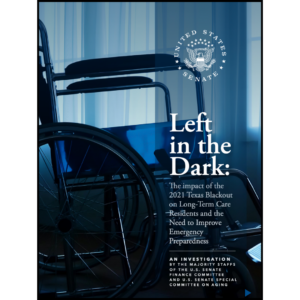2013 fire sprinkler bill may inspire retrofits and renovations
While skilled nursing prepares for the August 2013 deadline for installing sprinkler systems, several fire safety advocacy groups around the nation are working hard to reintroduce a bill that will help promote the installation and retrofitting of fire sprinkler systems in other buildings that are not equipped with this essential life safety technology. Common Voices, an advocacy group determined to create a “Fire Safe America,” has recently released information about the bill known as the Fire Sprinkler Incentive Act of 2013.
While fire sprinkler system technology has been around for several decades, some of the nation’s most vulnerable occupancies are not protected by fire sprinkler systems—including student housing, high-rise commercial buildings, entertainment complexes and high-rise residential buildings. In general, these types of structures built prior to the late 1970s were not required to include automatic fire suppression systems. Many of the beautiful skylines of major metropolitan cities around the country include thousands of high-rise structures that are not protected by fire sprinklers.
“The cost of fire in America is enormous,” Common Voices said in a recent factsheet. “Every year we suffer over 3,200 civilian deaths, 100 firefighter line of duty deaths and over 18,000 injuries. The direct property damage caused by fire is over $11.5 billion and the indirect costs, such as lost economic activity, are over $107 billion.”
As long-term care providers operating skilled nursing facilities (SNFs) regulated by The Centers for Medicare & Medicaid Services know, regulations were finalized in October 2008 requiring all licensed SNFs to be fully sprinklered by the fast-approaching deadline of August 13, 2013. This means that all SNFs must have fire sprinkler systems installed in their buildings that minimally comply with the 1999 edition of National Fire Protection Association #13 by the deadline. This requirement is explained in CMS S&C 09-04.
While the CMS requirement will help ensure that all SNFs are protected by fire sprinklers, the mandate does not apply to other levels of long-term care. The proposed Fire Sprinkler Incentive Act of 2013 may impact assisted living facilities, independent senior living properties and other occupancy types that provide long-term living services. If passed, the act will provide building owners and operators with incentives to install and retrofit fire sprinkler systems into older buildings under revised tax regulations.
Additionally, the evolution of this requirement, as well as the long, sad history of deadly fires in nursing homes in the United States, is comprehensively presented in an article published by the National Fire Protection Association earlier this year entitled, “Long Time Coming.” This is a “must read” article for all SNF owners, administrators and facilities management staff.
In most cases, fire sprinkler requirements for all “new” long-term care (LTC) facilities are very robust and it is rare for a new structure to be built without these systems. Typically, fire sprinkler systems are required by local building and fire prevention codes. The issue is that thousands of older buildings as well as smaller “homes” providing long-term care services have previously been exempted from these requirements. If passed, the proposed legislation will provide incentives to LTC operators to install fire sprinkler systems in their properties to enhance life safety.
To learn more, go to: www.fireadvocates.org.

Stan Szpytek is the president of consulting firm Fire and Life Safety, Inc., in Mesa, Arizona, and is the Life Safety/Disaster Planning Consultant for the Arizona Health Care Association and California Association of Health Facilities. Szpytek is a former deputy fire chief and fire marshal with more than 35 years of experience in life safety compliance and emergency preparedness. For more information, visit www.emallianceusa.com or email Szpytek at Firemarshal10@aol.com.
Related Articles
Topics: Design , Disaster Preparedness , Executive Leadership , Facility management , Housing , Operations











